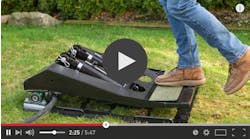The market for commercial uses of unmanned aerial vehicles (UAVs), or drones, will grow to $1.7 billion in 2025, driven by a broad range of applications led by agriculture, according to Lux Research.
Advanced sensors that are at the heart of the drones will claim a large chunk of the UAV cost stack, accounting for $670 million, nearly 40% of the overall pie. However, regulation remains the single biggest hurdle for commercial adoption.
“Drones have the potential for a wide array of commercial applications, but the current state of regulation is chaotic. Many countries have no regulations, making UAV flight technically legal but poorly regulated, while others – including the U.S. – still ban all commercial use,” said Maryanna Saenko, Lux Research Analyst.
“Regulators will first approve use in sparsely populated areas, benefitting applications like agriculture as well as oil and gas exploration,” she added.
Lux Research analysts evaluated the UAV landscape and built a model for commercial adoption, based on numerous factors including regulatory obstacles, technical limitations, cost, and performance. Among their findings:
- Agriculture tops applications. Agricultural drones will generate $350 million in revenues in 2025, led by uses in precision agriculture. Utilities will be the second-biggest segment at $269 million, while oil and gas will be worth $247 million.
- U.S. still will lead in unit sales. Sales of drones will reach 1.4 million in 2025. Sales in the United States will top the list with 330,000 units, while Europe and South America follow, each with around 200,000 units.
- Business model innovation will rival tech innovation. Drones are still in the early stages of growth and business models are in flux. Drones-as-a-service (DaaS) will emerge as a preferred model for developers, particularly in agriculture, where farmers seek to use the technology without investing in expensive systems.











